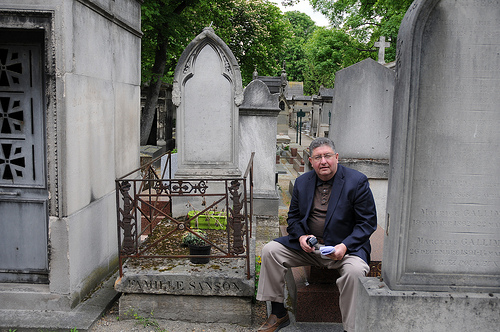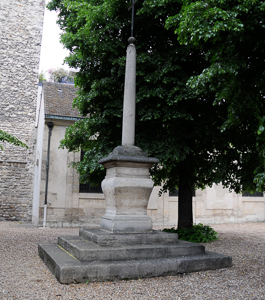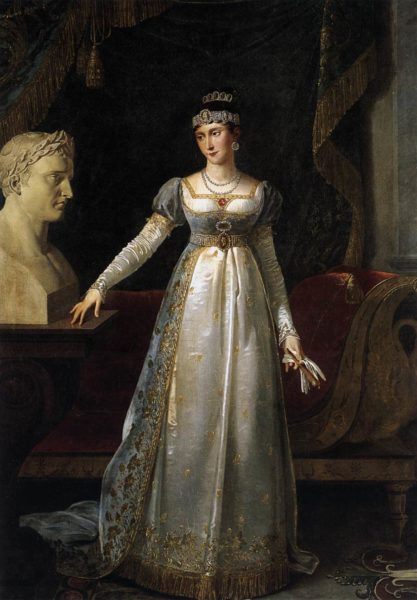I have to admit that Sandy and I have a grave addiction. We became cemetery enthusiasts as a result of writing the two volumes of Where Did They Put the Guillotine? Part of our research required us finding various people in Paris cemeteries, past and present (we certainly didn’t want to tell you Jean-Paul Marat was buried somewhere and low and behold, he wasn’t there—we actually never did find him but I suspect he’s buried under the parking lot of Église Saint-Étienne-du-Mont).

Years ago, during one of our trips to Paris, we started by visiting some of the more well-known cemeteries (e.g., Père Lachaise, Montmartre, and Montparnasse) and then in subsequent trips, moved on to several lesser known cemeteries (e.g., Picpus and Versailles). At some point during our many visits to Paris, Sandy managed to find her way down into the Catacombs (I have claustrophobia so I didn’t go and if you suffer from it, you shouldn’t go). Once she ascended the stairs back to the living, we hopped on a Métro and visited several famous parish cemeteries—at one, we were hoping to find Louis XVII’s grave (like with Marat, we were unsuccessful).

While the permanent residents of these Paris cemeteries are the main draw for visitors, it is easy to become infatuated with the architecture and symbols of the memorials: from the simplest of markers to the most ornate structures you’ll ever see in a grave yard. It seems there are memorials built in architectural styles compatible to every conceivable era: Art Nouveau, Art Deco, Gothic, Romanesque, Classical, Egyptian, Italian Renaissance, Baroque, Modern, and others. Then there is a second overlapping theme to each memorial: the funerary architecture adorning the grave. Join me as I take you through a quick explanation of some of the most common symbols and icons used in cemeteries. Knowing what they mean can fill in a lot of information about the resident who lies below.
Did you Know?
I never met Mr. Louis Wilson but if I had, I think I would have liked him (for those of you who know me, I like people with a good sense of humor). Mr. Wilson passed away in 1991 at the age of sixty. He’s buried in Whiskeytown, California and his grave is marked with two tablets: a photograph of Mr. Wilson and his epitaph which reads, “Here Lies Louis Ovell Wilson. Wanted To Be Buried Face Down So The World Could Kiss His Ass.” I think Mr. Wilson was probably a curmudgeon but hey, at least he was a humorous one. Based on his epitaph, I suspect Mr. Wilson didn’t place any value on symbolism and it’s likely he is having the last laugh.
Tombs, Sculptures, Memorials
Besides the mausoleum, the oldest funerary monument is the sarcophagus. The remains of the deceased lie inside their sarcophagus. These are typically found in the large European churches. My favorite is Saint-Denis where the French kings, queens, and their relatives were laid to rest in beautiful sarcophagi with carved marble recumbent statues on top. It’s too bad they all got dumped out during the French Revolution and thrown in the river or a giant pit. Another famous example is Napoléon’s tomb in Paris. He lies inside six coffins. The first is made of tin, next is mahogany, then two lead coffins, an ebony one, and then the final coffin we all see—oak. Read More “Non, je ne regrette rien”

